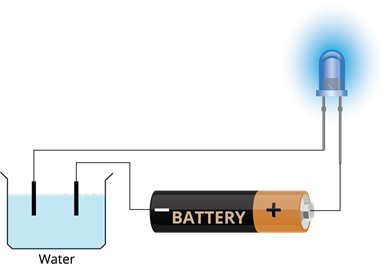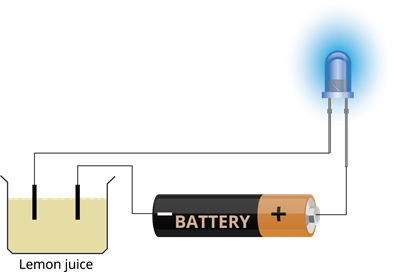
PUMPA - SMART LEARNING
எங்கள் ஆசிரியர்களுடன் 1-ஆன்-1 ஆலோசனை நேரத்தைப் பெறுங்கள். டாப்பர் ஆவதற்கு நாங்கள் பயிற்சி அளிப்போம்
Book Free DemoElectrical conductivity of water:
- Take water in a plastic container.
- Use LED instead of bulb since LED glows even when a weak electric current flows through it.
- Make a battery (a couple of cells) and connect its positive terminal to the longer lead of the LED. Put the negative terminal of the battery into the container contains water.
- Put the shorter lead of the LED too into the water using a wire.
- Make sure that both ends of the wire in the water do not touch and keep at least 1 cm distance.

Experiment setup
In this experiment, we can see that the LED glows that means the circuit is closed; hence, the electricity passes through the water to complete the circuit. Thus, it proves that water is a good conductor of electricity.
Electrical conductivity of lemon juice:
Perform the above experiment replacing water in the container with lemon juice.

Experiment setup
LED glows since the lemon juice has an acid in it which is a good conductor of electricity.
The same result will be observed when we replace the lemon juice with vinegar.